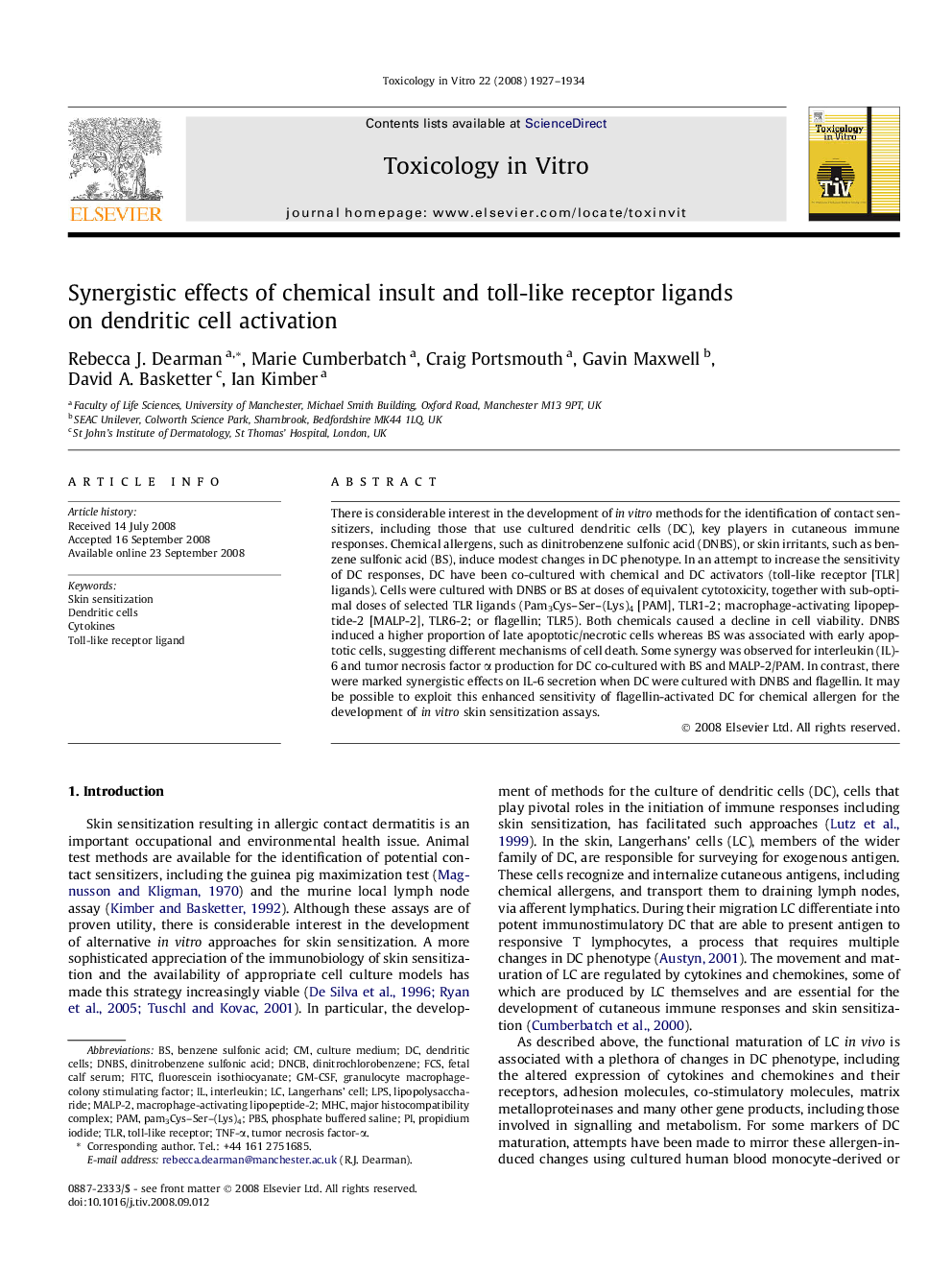| Article ID | Journal | Published Year | Pages | File Type |
|---|---|---|---|---|
| 2602859 | Toxicology in Vitro | 2008 | 8 Pages |
There is considerable interest in the development of in vitro methods for the identification of contact sensitizers, including those that use cultured dendritic cells (DC), key players in cutaneous immune responses. Chemical allergens, such as dinitrobenzene sulfonic acid (DNBS), or skin irritants, such as benzene sulfonic acid (BS), induce modest changes in DC phenotype. In an attempt to increase the sensitivity of DC responses, DC have been co-cultured with chemical and DC activators (toll-like receptor [TLR] ligands). Cells were cultured with DNBS or BS at doses of equivalent cytotoxicity, together with sub-optimal doses of selected TLR ligands (Pam3Cys–Ser–(Lys)4 [PAM], TLR1-2; macrophage-activating lipopeptide-2 [MALP-2], TLR6-2; or flagellin; TLR5). Both chemicals caused a decline in cell viability. DNBS induced a higher proportion of late apoptotic/necrotic cells whereas BS was associated with early apoptotic cells, suggesting different mechanisms of cell death. Some synergy was observed for interleukin (IL)-6 and tumor necrosis factor α production for DC co-cultured with BS and MALP-2/PAM. In contrast, there were marked synergistic effects on IL-6 secretion when DC were cultured with DNBS and flagellin. It may be possible to exploit this enhanced sensitivity of flagellin-activated DC for chemical allergen for the development of in vitro skin sensitization assays.
